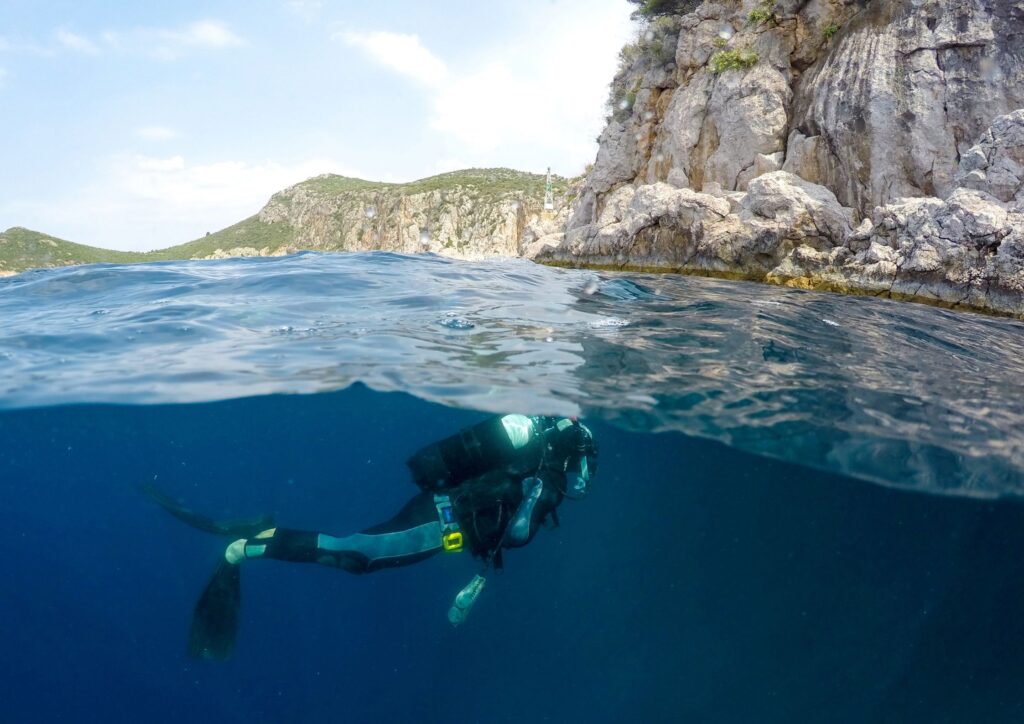As we venture into the unknown depths of the ocean, reading wave patterns becomes an essential skill for any scuba diver. It’s not just about navigating through the currents, but also understanding the underlying forces that shape our underwater world. In this blog post, we’ll dive into the world of wave patterns and explore how to read them like a pro, ensuring a safe and thrilling experience for all.
The Power of Wave Patterns
Wave patterns are a vital aspect of scuba diving. They can provide valuable information about the direction of currents, sea floor topography, and even potential hazards like underwater ridges or drop-offs. By understanding wave patterns, you’ll be better equipped to navigate through challenging dive sites, avoid obstacles, and make the most of your time underwater. But how do you read these complex patterns? The key lies in recognizing the direction and speed of the waves.
Using Your Compass: A Tool for Wave Pattern Navigation

A trusty compass is an essential tool for any scuba diver, particularly when reading wave patterns. By aligning your compass with the surrounding environment, you can determine the direction of the waves and adjust your dive plan accordingly. When navigating through a current, use your compass to determine the direction of flow and make adjustments to your buoyancy to maintain depth or conserve energy. Don’t forget to check your compass frequently to stay on track!
Sea Currents: The Uninvited Guest
Sea currents can be a real challenge for scuba divers, especially when they’re strong and unpredictable. When reading wave patterns, it’s crucial to understand the direction and speed of these currents. By recognizing the current’s flow and adjusting your dive plan accordingly, you’ll be better equipped to avoid getting swept away by the tide. Remember to always monitor your buoyancy and keep a close eye on your air supply when navigating through strong currents.
Markers and Sand Ripples: Deciphering Wave Pattern

Markers like underwater ridges, rock formations, or even trash can provide valuable information about wave patterns. By recognizing these markers, you can determine the direction of the waves and make informed decisions about your dive plan. Sand ripples are another indicator of wave patterns, providing clues about the depth and speed of the water above. When reading wave patterns, pay attention to these subtle cues and adjust your dive accordingly.
Putting it All Together: Mastering Wave Pattern Reading
Mastering wave pattern reading requires a combination of observation, analysis, and adaptation. By combining your knowledge of compass direction, sea currents, markers, and sand ripples, you’ll be able to read wave patterns like a pro. Remember to stay flexible and adapt to changing conditions, as wave patterns can shift unexpectedly. With practice and patience, you’ll become proficient in reading wave patterns, ensuring a safe and thrilling scuba diving experience for all.
Conclusion: The Thrill of the Unknown
As we venture into the unknown depths of the ocean, reading wave patterns becomes an essential skill for any scuba diver. By mastering this art, you’ll be able to navigate through challenging dive sites, avoid obstacles, and make the most of your time underwater. At our resort, we’re dedicated to providing a safe and thrilling experience for all our guests. Join us in our mission to change the world, one resort at a time.
The Art of Wave Pattern Reading
Wave pattern reading is an essential skill for any scuba diver. By combining your knowledge of compass direction, sea currents, markers, and sand ripples, you’ll be able to navigate through challenging dive sites, avoid obstacles, and make the most of your time underwater. At our Bali diving resort, we’re dedicated to providing a safe and thrilling experience for all our guests. Contact us today to learn more about our diving services and join us in our mission to change the world, one resort at a time.

I love how this post goes in-depth on wave pattern reading. As a scuba diver, I can attest that understanding wave patterns is crucial for a safe and enjoyable dive experience. The use of markers, sea currents, and sand ripples is also an excellent way to decipher wave patterns.
Dear Nadia, thank you for sharing your positive experience with our blog post on wave pattern reading! We’re thrilled to hear that the information was helpful and relatable to your own scuba diving experiences. At Gill Divers, we believe that understanding wave patterns is essential for a safe and enjoyable dive experience, just like you mentioned. If you have any more questions or topics you’d like us to cover in future posts, please don’t hesitate to reach out! Contact us at Tel: +65 6734 9373 or Email: [email protected]. We look forward to hearing from you again!
This post has opened my eyes to the importance of wave pattern reading. As a beginner diver, I didn’t realize how much it could impact my dive experience. The tips on using a compass and recognizing markers are super helpful. Can’t wait to put these skills into practice!
Hi Evelyn, thank you for sharing your thoughts on our blog post about wave pattern reading! We’re thrilled to hear that the tips were helpful and that you’re excited to put them into practice. Remember to always stay calm and adapt to changing conditions while diving. If you have any further questions or concerns, please don’t hesitate to reach out to us at [email protected]. Tel: +65 6734 9373. We’re here to support you in your diving journey! Looking forward to hearing about your future dive experiences!
I’m impressed by the detail this post provides on wave pattern reading. As an experienced diver, I appreciate the emphasis on staying flexible and adapting to changing conditions. The examples of markers and sand ripples are also super useful.
Dear Kavin, thank you for sharing your thoughts on our blog post about wave pattern reading! We’re thrilled to hear that the detail and emphasis on flexibility resonated with you as an experienced diver. We completely agree that staying adaptable is crucial when navigating the ocean’s currents. The markers and sand ripples we highlighted are indeed valuable indicators of wave patterns, and we’re glad you found them useful. If you have any more questions or would like to share your own experiences with wave pattern reading, please don’t hesitate to reach out to us at [email protected] or call us at +65 6734 9373. We’d be happy to hear from you and help you plan your next diving adventure.